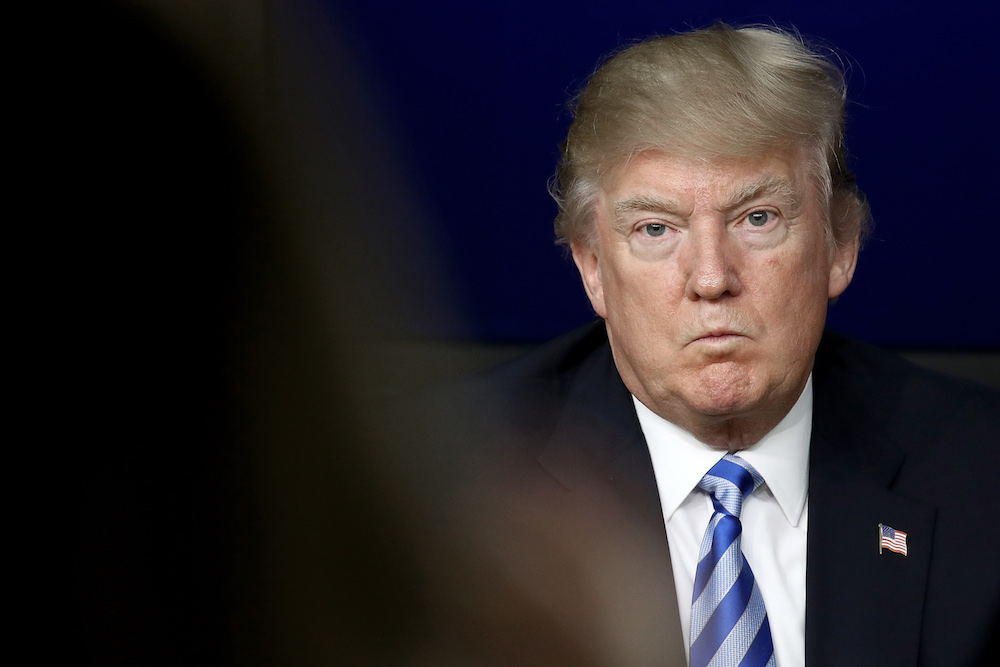The United States leads the world in national defense spending. Meanwhile, we’re multiples behind other Western democracies like the United Kingdom, Canada, Germany, and France in arts funding. Donald Trump, in just his first few months in office, has made it clear that he wants to exacerbate those differences. His budget proposal, released in March, calls for an increase in defense and homeland security spending at the expense of federal arts agencies. Specifically, the National Endowment for the Arts (NEA)–which provides grants for a wide range of programs, institutions, and artistic endeavors–and the National Endowment for the Humanities (NEH)–which funds humanities research and preservation–would be eliminated, while the Corporation for Public Broadcasting (CPB) would be privatized.
Though Trump is the first president to outright call for outright abolishment, the NEA and NEH’s funding has frequently been on fraught ground thanks to attacks by conservatives that date back to actor-turned-president Ronald Reagan’s original wish to eliminate the NEA, which was only halted after a “task force” featuring Charlie Heston intervened to convince him otherwise. Even so, Reagan continued to propose dramatic budget cuts for the NEA, and funding continued to decrease through George H.W. Bush one-term presidency. It plunged even further, and more infamously, during Bill Clinton’s administration, after a urine-covered crucifix and a man in a polyester suit helped plunge America into the Culture Wars.
NEA funding had since been on a meager incline over the past two decades thanks to a bipartisan effort in Congress. The progress will end, naturally, with Trump, who used his campaign to drive a wedge between middle America and the coasts, and as such falls easily in line with conservatives’ historic criticisms of the NEA and NEH. Trump’s proposal doesn’t have unanimous support from the GOP, though: 11 house Republicans recently signed a letter that calls for an increase in the agencies’ budget. Regardless, the NEA’s survival hasn’t been this tenuous in decades.
Bill Clinton
The work of artists Robert Mapplethorpe and Andres Serrano became examples of moral decay for zealous right-wingers by the late ’80s. The former came under fire for his graphic portraits of same-sex relationships and sadomasochism, and the latter for his infamous 1987 photograph Piss Christ. What was even more offensive to conservatives about these supposed offenses was that they were federally funded. In 1989, Piss Christ caused outraged when it showed up on a tour partially funded by the NEA, and in that same year, the Corcoran Gallery of Art canceled a planned Mapplethorpe retrospective after North Carolina Republican Senator Jesse Helms brought together 100 congressmen to write a protest letter to the NEA, who funded a prior Philadelphia showing.
Philistinism snowballed when the Republicans took control of both Houses of Congress in 1995 for the first time in the agency’s history Then-Speaker of the House Newt Gingrich wrote his Republican manifesto, entitled Contract With America, that called for slashing NEA’s funds by half. A year later, he’d call for its privatization, telling C-SPAN, “I’m against self-selected elites using your tax money and my tax money to pay off their friends.”
The NEA survived, but Congress agreed in August 1995 to cut its funding by almost 40 percent. As a result, nearly half of the agency’s staff members lost their jobs, its 17 categories were condensed into four, and individual grants to artists were prohibited. Before the drastic cut, funds had been steadily decreasing since 1980.
George W. Bush
Bush, who would eventually gain notoriety as a painter, was more supportive of the arts than either his father or Reagan, with federal funding finally started to increase after falling precipitously since its peak in 1979. The budget continued on an upward trend until the end of his presidency, and he notably increased the NEA’s budget by $20.1 million for fiscal year 2008, the largest push in three decades.
Although the increases did not make up for the ’90s budget cuts, Bush did stem the bleeding over his eight years. His administration did so against the continued pillorying from conservatives and the Heritage Foundation, a conservative think tank that in 1997 asked if arts funding was “welfare for cultural elitists.” The answer, it should be noted, is no—40 percent of NEA-funded activities take place in high-poverty neighborhoods.
Barack Obama
Obama was a surrogate for black culture in the White House (see the farewell party swag surf) and is appreciative of a Bob Dylan appearance, but his support of the arts did not consistently extend to NEA funding. The American Recovery and Reinvestment Act of 2009 distributed $50 million in funding to the NEA, and allocation peaked at $167.5 million for fiscal year 2010 before sharply declining the year after like dozens of other federal agencies.
Funding generally steadied out to Bush-era levels after the “budget sequestration” of 2013 sliced spending by 5 percent. Obama ultimately wasn’t that much of a boost, but it an unusually petulant and obstructionist Congress made increased NEA spending a distant goal.
Donald Trump
Sequestration and outright gutting the budget are obviously a couple of steps below straight-up abolishing an agency that many institutions depend on. The proposals to do so reek of contradictions that are distinctly Trumpian. The NEA moved out of its original headquarters at the Old Post Office building in Washington, D.C.,; that space is now occupied by the Trump International Hotel D.C. after $200 million in renovations. Meanwhile, Trump’s traveling costs are well on pace to eclipse $160 million after one term. Both amounts are higher than either the NEA, CEH, or CPB’s budget.





